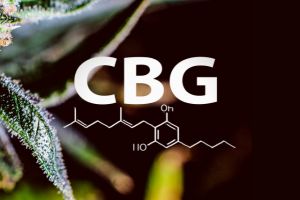What is CBG?
Posted by Tweedle Farms on Oct 16th 2023

The journey into understanding the multifaceted world of CBD flower, CBG flower, THCA flower and the cannabinoids that they contain is nothing short of fascinating. Among the plethora of compounds contained within the hemp plant (and more specifically, CBG flower strains like White CBG or Sour G CBG), Cannabigerol (CBG) and its raw precursor Cannabigerolic Acid (CBGA) stand out as remarkable players, each holding immense promise and potential in the realm of therapeutic benefits and scientific exploration.
CBGA: The Precursor Molecule
At the heart of the intricate biochemical pathways within the hemp plant lies CBGA, the "mother" or precursor molecule from which a myriad of cannabinoids spring forth. Often referred to as the stem cell of cannabinoids, CBGA is the foundational compound that undergoes specific enzymatic reactions, ultimately branching into the diverse array of cannabinoids like THC, CBD, and, notably, CBG. As such, it’s important to understand that CBGA is not found only in CBG flower, or even hemp flower. Rather, it is ubiquitous as a precursor molecule throughout cannabis.
CBGA serves as a pivotal intermediary in the plant's biosynthetic process, acting as the precursor to three major cannabinoid lines: THCA (tetrahydrocannabinolic acid), CBDA (cannabidiolic acid), and CBCA (cannabichromenic acid). Through enzymatic transformations, these acids can then decarboxylate into their neutral, more well-known forms—THC, CBD, and CBC, respectively.
CBG: A Potent Cannabinoid
Amidst this intricate biochemical dance, CBG emerges as a cannabinoid that has recently gained considerable attention for its potential therapeutic properties. Often referred to as a “minor” or even “rare” cannabinoid due to its relatively low concentration in most cannabis strains, CBG boasts its own set of unique attributes that set it apart in the cannabinoid spectrum.
That’s why, in recent years, cannabis geneticists have begun breeding hemp flower strains that are dominant in CBG. The resulting strains of CBG flower have gained considerable popularity, due to their highly-functional, non-intoxicating effects. In fact, many feel that CBG flower offers many, if not all, of the therapeutic benefits of cannabis, without any kind of “high.”
The Potential Therapeutic Applications of CBG
Research on CBG is still in its early stages, yet initial findings are remarkably promising. CBG flower, and the CBG extracted from it, shows potential in the treatment of glaucoma by reducing intraocular pressure. Additionally, its neuroprotective qualities make it a candidate for neurological conditions such as Huntington's disease and Parkinson's disease.
Furthermore, its ability to inhibit the uptake of a neurotransmitter associated with anxiety and depression—gamma-aminobutyric acid (GABA)—positions CBG as a possible adjunct in mental health treatments.
Navigating the Legal Landscape
In the context of legality, the 2018 Farm Bill in the United States notably differentiated hemp (and, as a result, CBD flower and CBG flower) from marijuana, thereby legalizing the cultivation and sale of hemp-derived products, including CBG flower and products containing CBG. This distinction has propelled research and development in the hemp industry, paving the way for exploring the full potential of cannabinoids like CBG.
Where to find CBG
Here at Tweedle Farms, we offer CBG and CBGA in many forms. First, it can be found in small amounts throughout nearly all of our hemp flower, but it can also be found in much higher concentrations in our CBG flower. CBG is also available in concentrate form as bubble hash, Full Spectrum RSO, and even in a number of our CBD Oil Tinctures!
The Road Ahead
As research continues to unfold, unlocking the full therapeutic potential of CBG and CBGA remains an exciting frontier in the realm of cannabis science. However, comprehensive clinical trials and further exploration are necessary to solidify and expand our understanding of these compounds, their mechanisms of action, and their potential applications in various medical fields.
In conclusion, the journey through the world of cannabinoids, specifically CBG and its precursor CBGA, unveils a rich tapestry of therapeutic potential and scientific intrigue. As we delve deeper into the biochemical intricacies of these compounds, the promise of unlocking novel treatments and wellness avenues beckons, offering a beacon of hope for individuals seeking alternative and innovative approaches to health and well-being.



